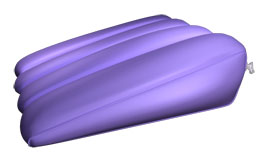The term 4th Trimester has been widely used to
explain a newborn infant’s transition into the world. While this is extremely
important and should be a large part of your focus after giving birth to your
little one, it is also wise to not forget about yourself. I’d like to take some
time to discuss how mothers should take care of themselves during this 4th
Trimester. New research states it can
take 18 months for a woman’s body to heal post-partum and this 4th
Trimester can be the foundation for a complete recovery.
Most importantly, surround yourself with a supportive team
with YOU being the main focus. Let them care for you, cook and clean for you
while you rest. Make things as easy on yourself as you can.
Lie down as much as possible. This is important as you heal
and your uterus shrinks back down. This added pressure can cause the vaginal
wall collapse (prolapse) so take this weight off by lying horizontally or even
prop your tush up on pillows.
This is the perfect time to start doing kegels. Due to
swelling and the recent trauma, you might not be able to feel your pelvic floor
muscles contracting. One trick is to sit in a chair and feel your perineum (the area between the anus and the scrotum or vulva) lift
from the chair. Another trick is to lie on your back with pillows under tush
and let gravity help you contract and lift those muscles. If you have
incontinence, see a pelvic floor therapist.
Lastly, protect and assist your Rectus Abdominis muscle
(6-pack muscle) by using tape and avoiding “sit ups”. Diastasis Recti has been
getting a lot more attention lately but it still can be misunderstood or even
overlooked by your doctor. All pregnant women who carry to term will have a
separation of the rectus abdominis muscle along with stretching of the linea
alba. Use the log roll technique to get in and out of bed by rolling on your
side to get on or off you back to avoid opening a diastasis more. Also, I have found that taping can help assist
with the closure of the Rectus Abdominis as well. A therapist can place this on
you and teach you how to do independently as well. I would be careful with the
popular corsets or girdle shapers out there as they increase abdominal pressure
and place additional force on your pelvic floor worsening prolapsed.
In summary, use this 4th Trimester to take care
of yourself and listen to your body. If you think you are not healing properly
make an appointment with your doctor, see a pelvic floor therapist; be your own
advocate. After all, you have a little precious baby depending on you now.
Here at Duffy and Bracken Physical Therapy we have great pelvic floor therapists that can help equip you both pre and post natal. Give us a call to schedule your assessment.
Candice Amat, PT, DPT
Pelvic Floor Therapist
(212) 402-5430













